How to Build Enterprise Change Capability With Project ECM

4 Mins
Updated: August 5, 2024
Published: March 29, 2022

One of the most common pitfalls when institutionalizing enterprise change management (ECM) is failing to manage the effort as a project and a change. To do that, an important mindset shift must occur.
You have to move out of the mindset of simply doing more change management (whether that means more application or more training) to a mindset of deploying change management and building organizational capabilities. Countless organizations continue to do more and more change management, and their projects and initiatives are more successful because of it. But they never hit the seminal moment of deciding to take the next step toward institutionalizing change management.
When you begin treating and managing the effort to institutionalize change management as a project and a change, you have embarked on what we call "Project ECM." We use this term to reinforce that this is an effort that must be managed like a project.
Taking Project ECM From Current State to Future State
Like any other project, there is a current state or how things are done today. Like any other project, there is a future state or how things will be done after implementation. And like any other project, there is a technical side and a people side to the transition state between the current and future states. This simple but universal model of change is applicable to a variety of organizational efforts, but here we are applying it to one particular effort: institutionalizing change management.
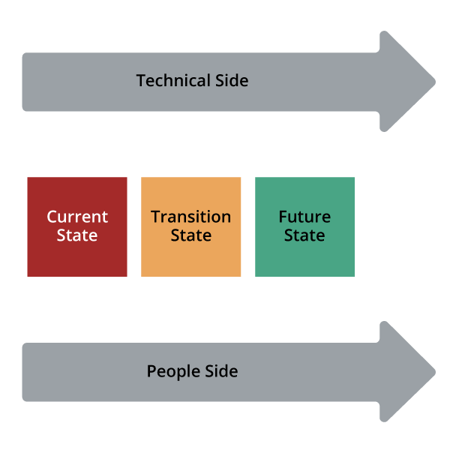
In addition to thinking about Project ECM as a change using the states-of-change framework, you will also need to use the tools available for making any project successful, including change management and project management. You will need to:
- Design a solution
- Secure effective sponsorship
- Create a schedule and budget
- Complete organizational and individual change management plans
Treating the effort to institutionalize change management like an initiative increases the likelihood that you will be successful and adds credibility to the work you are doing.
The content below addresses the current, transition and future states for Project ECM with descriptions and examples.
If this is a direction your organization is moving, Prosci's ECM Boot Camp is designed for you. In the one-day workshop you gain additional tools based on research findings for creating your Project ECM strategies and plans.
Current State of Project ECM
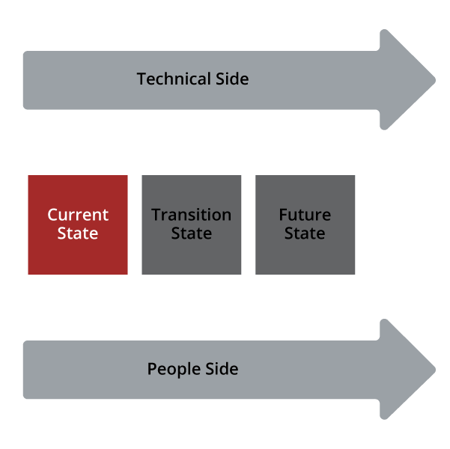
The current state of Project ECM is how change management is currently done in your organization:
- What percentage of projects are applying change management?
- Is there a standard change management approach or are there numerous approaches throughout the organization?
- Are tools available for all levels in the organization?
- Who has been trained in change management?
Prosci's Change Management Maturity Model and Change Management Maturity Model Audit enable you to determine your organization’s current maturity across five change management capability areas:
- Leadership
- Application
- Competencies
- Standardization
- Socialization
A second aspect of the current state is understanding factors about the environment where you are trying to institutionalize change management. This includes assessment and evaluation of how change occurs in the organization, including the initiation and governance processes in place. Through research and experience, Prosci has also identified a number of factors that can act as assets in the effort to deploy change management or risks that must be mitigated. Evaluating each of these factors builds out your understanding of the environment for Project ECM.
Future State of Project ECM
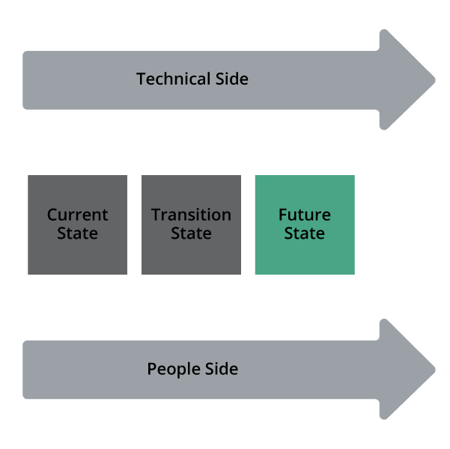
The future state of Project ECM is what your organization will look like and how it will operate after you have built change management capabilities and competencies. This is when change management becomes the norm:
- Applying change management on projects and initiatives is the expectation, not the exception
- Executives and project teams assume that resources, tools and processes addressing the people side of change are present on all projects
- Employees throughout the organization have built their own personal competencies at leading change, from wherever they are in the organization
Failing to define a future state and establish the targets of what you are trying to achieve when you take on Project ECM is a major pitfall for many organizations that are beginning the journey to Enterprise Change Management. They make progress in applying change management more regularly, or they train a number of employees in change management, or they even work to integrate change management and project management, but they never step back to define what they are trying to achieve.

Defining the future state includes creating a vision statement, establishing objectives, identifying the artifacts that will be present after the main push of the deployment effort, and creating metrics and indicators that will let you know if you reached the future state for Project ECM.
Transition State of Project ECM
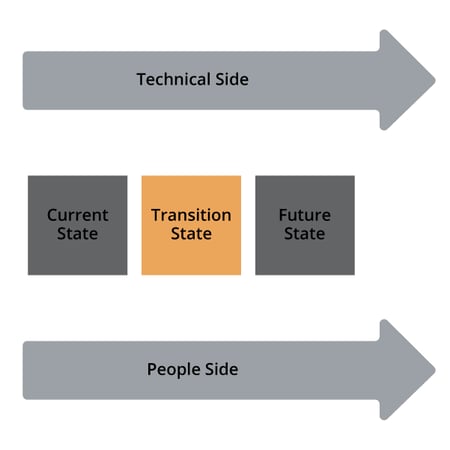
The transition state for Project ECM involves moving from the status of change management today in the organization to a point where change management is embedded and ingrained in how the organization operates. The transition is where you change how changes are managed in the organization by making change management a part of every initiative.
The Technical Side
The transition state has a technical side, just like other initiatives, which is the implementation of solutions and mechanisms for institutionalizing change management. The Prosci ECM Strategy Map defines five areas where tactics are needed to advance change management at the enterprise level: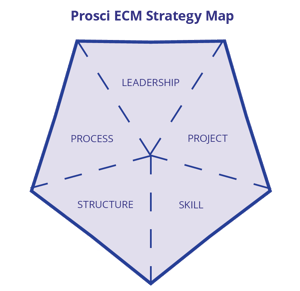
- Leadership tactics
- Project tactics
- Skill tactics
- Structure tactics
- Process tactics
An effective solution for the technical side of the transition state requires a balanced approach both in terms of these five tactical areas and in terms of timing (short-term, medium-term and long-term tactics).
The People Side
The transition state also has a people-side component where you build buy-in, support and commitment for change management. You must also fulfill the specific roles in change management:
- Senior leaders become great sponsors of change
- People managers become great coaches to their direct reports
- Project managers address the people side of their project from the onset
The people side of the transition state is based on the fact that change management takes change management. A fully implemented technical solution that no one supports will not deliver results and outcomes.
What This Means for You
Becoming great at change does not happen by chance. It takes an intentional and concerted effort to build change management competencies and practices throughout the organization. However, given the ever changing world in which we live and the increasing velocity of change we expect, no other capability will be more important going forward. With structure and intent, your organization can build change management capability and enable organizational agility.
"The winners of the future will be those who can out-change the competition, customer demands, and the market."
- Tim Creasey, Chief Innovation Officer, Prosci



